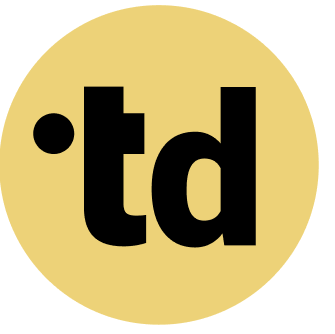Key Takeaways
Workload accuracy measures if your team is working on strategically important tasks, while workload variance measures if the work is distributed evenly.
For hybrid human-AI teams, measure AI performance with metrics like task success rate and human performance with cognitive load reduction.
Use a structured framework to measure workload: define metrics, use tools, establish a baseline, visualize data, and review weekly.
In today's dynamic environment, leaders are tasked with a complex challenge: ensuring teams are not just busy, but effective. Many organizations struggle to quantify effort, leading to a reported 37% of workers needing extra hours just to keep up. This isn't just about hours worked; it's about the strategic value of that work. Understanding how to measure workload accuracy and variance is the first step toward building resilient, high-performing teams. By moving from assumptions to data, Team Architects can pinpoint imbalances, prevent burnout, and align every task with core objectives, transforming how work gets done.
Practical Framework for Team Architects
As a Team Architect, you can apply these principles to your organization:
- Map Current State: Document existing roles and responsibilities using a tool like teamdecoder.
- Identify Gaps: Where are roles unclear? Where do humans and AI agents overlap?
- Define Clear Boundaries: Specify which tasks are handled by humans vs. AI agents.
- Create Accountability: Assign clear decision rights for each role.
- Iterate and Improve: Continuously refine based on team feedback.
Defining the Real Workload Problem
The real issue isn't that teams have too much work; it's that the work is often misaligned and unevenly distributed. Workload accuracy asks: are we spending our limited time on the right tasks that drive strategy forward? A German study on work characteristics found a direct link between high workload and burnout, underscoring the health implications of getting this wrong. Meanwhile, workload variance measures how evenly that work is spread. A high variance means a few team members carry a disproportionate load, a scenario that erodes morale and efficiency over time. Perceived workload imbalance can directly impact job satisfaction and motivation. Ignoring these two metrics is like navigating without a compass; you're moving, but likely in the wrong direction. Addressing this requires a shift in what workload management means today.
Sweet Teams Are Made of This: Measuring Workload Accuracy
To measure workload accuracy, you must first define what "accurate" work looks like for your team. This involves connecting every task and project to a strategic goal. A utilization rate, for example, might show an employee is 80% busy, but accuracy reveals if that 80% was spent on high-value activities. One effective method is to categorize tasks based on strategic importance, giving more weight to those with higher impact. This provides a clear lens on how team efforts align with business objectives. You can start by implementing these steps:
- Define strategic priorities for the quarter, limiting them to three or four key objectives.
- Map all current team projects and major tasks directly to these priorities.
- Assign an 'Accuracy Score' from one to five for each task based on its alignment with a key objective.
- Calculate the team's overall Workload Accuracy Score weekly, aiming for an average of four or higher.
- Use a tool to visualize this alignment, making it easy to see where workload planning can be improved.
Tracking this reveals that teams often spend up to 40% of their time on low-impact work. By quantifying accuracy, you give your team the clarity needed to focus on what truly matters, a core principle of modern organizational development.
Teams Just Wanna Have Fun: Tackling Workload Variance
High workload variance is a silent team killer, creating burnout in some and disengagement in others. Measuring it exposes these hidden imbalances. The Full Time Equivalent (FTE) method is one way to analyze this, calculating the number of full-time employees needed for a task versus who is actually assigned. An FTE value above 1.28 for an individual often signals an overload. Another approach is tracking task distribution and completion rates across the team. If one person consistently completes 20 tasks while another completes five, it's time to investigate. This isn't about comparing individuals, but about understanding the system creating the imbalance. A German study highlighted that factors like work disruptions and lack of cooperation significantly affect perceived mental workload, contributing to variance. With clear data, you can reallocate tasks, redesign roles, and ensure a fairer, more sustainable distribution of effort. This is foundational to effective task reallocation based on capacity.
Make Bots and Humans Click: Measuring hybrid team (humans and AI agents) Workloads
Integrating AI agents into teams adds a new layer to workload measurement. The goal is a balanced distribution between humans and AI, where AI handles routine cognitive tasks, reducing human mental strain. Key performance indicators for this hybrid model are different. For AI, you measure task success rate and output accuracy. For humans, you measure the reduction in cognitive load and improvements in decision-making accuracy. A key metric is the AI-Human Work Balance, ensuring tasks are distributed effectively. For example, an AI with a 90% task success rate on data entry frees up approximately eight hours per week for a human team member to focus on strategic analysis. This approach to predicting resource needs is crucial for scaling roles effectively. The most successful hybrid teams don't just add AI; they redesign workflows around it. You can try teamdecoder for free to map these new hybrid roles.
Architect Insight: A Framework for Accurate Measurement
For Team Architects, implementing a measurement system requires a structured approach. It's about creating a repeatable toolkit that provides fast clarity. Our Playful Tip: Start with a two-week measurement sprint to gather baseline data without overwhelming your team. Here is a checklist to guide you:
- Define Your Metrics: Choose three to five key metrics. For accuracy, use 'Strategic Alignment Score.' For variance, use 'Task Count Deviation.'
- Select Your Tools: Use project management software to track time and tasks automatically. This provides objective data for analysis.
- Establish a Baseline: Measure for two weeks to understand your team's current state. This creates a benchmark for future improvements.
- Visualize the Data: Use dashboards to make workload data visible to Many people. Transparency builds trust and empowers the team to self-correct.
- Review and Adjust Weekly: Hold a 15-minute weekly meeting to discuss the data. Focus on system improvements, not individual performance.
Deep Dive: The German KFZA questionnaire offers a validated method for assessing perceived mental workload, covering factors from task versatility to work disruptions. Integrating its principles can add a powerful qualitative layer to your quantitative data, giving you a holistic view of your team's experience and helping you master workload forecasting.
From Chaos to Clarity: The Result of Effective Measurement
When you consistently measure workload accuracy and variance, the transformation is profound. Teams move from a state of reactive chaos to proactive clarity. Organizations that master this see a increase in project success rates and a a significant portion reduction in employee turnover related to burnout. Roles and responsibilities become crystal clear, eliminating the friction of uncertainty. Hybrid teams operate seamlessly, with humans and AI augmenting each other's strengths. This clarity allows for true strategy operationalization, as every action is aligned and balanced. It's the foundation for scaling your operations from day one. See our pricing to understand how accessible this transformation can be. This data-driven approach to workload capacity planning builds resilient, engaged, and powerful teams ready for any challenge.
Try teamdecoder for free - shape your team and make change feel like play!
#TeamArchitecture #HybridTeam #OrganizationalDevelopment #WorkloadManagement
More Links
Wikipedia offers a comprehensive overview of work performance.
The German Federal Statistical Office (Destatis) provides tables on gross domestic product and employment figures.
The German Federal Ministry of Finance offers an analysis of productivity development within Germany.
Deloitte details its services in workforce technology and analytics.
A Deloitte PDF document provides insights into workforce or technology analytics.
Fraunhofer IAO presents a PDF document on the impact of the Corona pandemic on work, performance, and productivity.
KPMG outlines its advisory services focused on performance and strategy.
PwC explores increasing productivity through the use of Microsoft Copilot.
FAQ
How can I measure workload without micromanaging my team?
Focus on system-level data rather than individual performance. Use anonymized or aggregated data from project management tools to identify patterns in task distribution and strategic alignment. Frame the conversation around improving processes and removing bottlenecks, not scrutinizing individuals.
What tools can help measure workload accuracy and variance?
Project management software like Asana, Jira, or Trello can track task assignments and completion rates. For a deeper analysis of roles and responsibilities, a platform like teamdecoder helps visualize how work connects to strategic purpose, providing clarity on both accuracy and variance.
How often should we review workload metrics?
It's best to review workload metrics in a brief weekly meeting. This frequency allows you to spot trends and make small, continuous adjustments before imbalances become critical problems. A quick 15-minute check-in is often sufficient.
What is the difference between workload management and time management?
Time management focuses on how an individual organizes their time to complete tasks efficiently. Workload management is a broader strategic process of distributing and managing the total volume of work across a team to ensure it is balanced, aligned with goals, and sustainable.
How does measuring workload support organizational development?
Measuring workload provides the objective data needed for effective organizational development. It highlights issues in team structures, role definitions, and workflow processes. By addressing these data-backed insights, you can build more efficient, resilient, and scalable teams.





